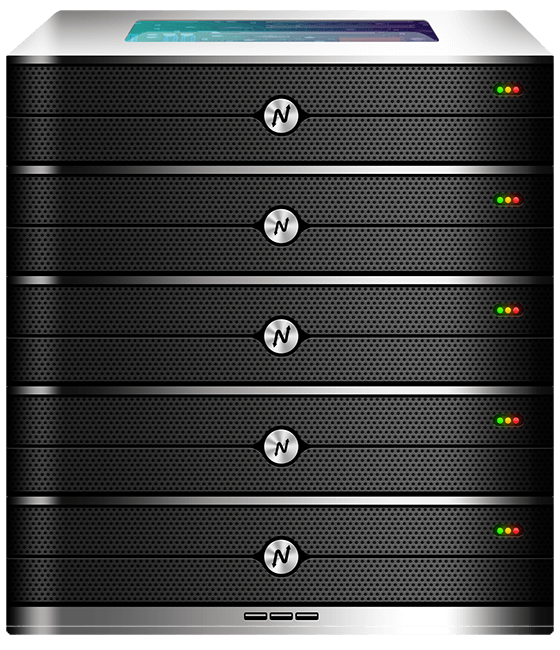Choosing the right MS SQL Server hosting is a business decision that affects application performance, data security, and total cost of ownership. Whether you run transactional systems, reporting warehouses, or business intelligence workloads, the host must provide Windows environments with reliable RDP access, predictable I/O, and strong backup and compliance options. India’s hosting infrastructure has matured rapidly: it now offers cost-effective data centers, low latency across Asia, strong peering to global networks, and enterprise-grade security controls. That makes Indian servers an attractive option for regional and global deployments when combined with a CDN, geo-replication, or hybrid-cloud architecture.
Why Indian servers are a smart choice for many organizations is simple. They deliver cost-effectiveness without sacrificing hardware quality. They offer lower latency to customers in South and Southeast Asia, and they can match global speed with proper routing and caching. Security, reliability, and compliance frameworks are increasingly available from Indian providers, and scalable plans let startups and enterprises grow without disruptive migrations. In this guide we explain what to look for in MS SQL Server hosting, compare Indian locations with other regions, walk through real-world use cases, and recommend XenaxCloud plans suited to typical SQL workloads.

What makes MS SQL Server hosting different from generic hosting
MS SQL Server is a commercial relational database that thrives on consistent CPU, memory, and especially disk I/O performance. Unlike simple shared web hosting where PHP pages and static assets dominate, SQL Server workloads often require:
- A Windows Server environment with official SQL Server compatibility and licensing options.
- High-performance storage: low-latency NVMe or SSD backed disks for transaction logs and data files.
- Dedicated RAM and CPU to maintain predictable query latency and concurrency.
- RDP access and administrative control to install SSMS, manage backups, and apply patches.
- Networking that supports low-latency connections for application servers and reporting clients.
When evaluating MS SQL Server hosting, avoid plans that oversubscribe I/O or hide storage type. Look for precise specs (vCores, RAM, disk type and size, bandwidth) and clearly stated backup, snapshot, and restore features. For many organisations, managed Windows RDP or dedicated server options reduce administrative burden while offering the control necessary for optimal SQL Server tuning.
How to choose the right MS SQL Server hosting plan
Selecting the right plan begins with workload profiling. Break your needs into transaction volume, concurrency, and reporting intensity.
- Small business or development: If you host light transactional systems or development databases, a KVM RDP 1 — 2 Vcore CPU, 8GB RAM, 40GB Storage, 2TB Bandwidth, $5.99 can be a sensible entry point. It provides RDP access, 8GB RAM for modest caching, and enough storage for small datasets.
- Growing production systems: For systems with medium traffic and concurrent users, choose at least 4 vCores and 16GB RAM. KVM RDP 2 — 4 Vcore CPU, 16GB RAM, 50GB Storage, 4TB Bandwidth, $10.79 fits many mid-size applications and allows room for buffer pool and procedure cache.
- High-performance and mission-critical: OLTP systems and analytics workloads need 8+ vCores, 32GB+ RAM, and NVMe I/O. Consider higher KVM RDP tiers, Gold KVM RDP variants, or Dedicated Servers for single-tenant performance.
Beyond raw specs, consider these evaluation points:
- Storage architecture: separate data and log volumes reduce I/O contention.
- Backup policy: daily full backups, transactional log backups, and tested restores.
- Disaster recovery: options for geo-replication or standby nodes.
- Licensing: confirm if SQL Server licensing is included or BYOL (bring your own license).
- Support: 24/7 support and Windows expertise are crucial for database incidents.
XenaxCloud’s KVM RDP plans are tailored to Windows workloads and provide the RDP access and dedicated resources SQL Server needs. If you want a faster provisioning experience, explore their VPS and Windows RDP pages for precise options. https://xenaxcloud.com/indian-rdp/
- 4 GB RAM
- 40 GB SSD Storage
- 2 TB Bandwidth
- 1 IPV4 & IPV6
Speed, uptime, and security advantages of quality MS SQL Server hosting
Performance is rooted in predictable resources and infrastructure design. For MS SQL Server hosting, focus on three pillars: compute, storage, and network.
Compute: Choose CPUs with good single-thread performance for query execution and sufficient cores for concurrency. Memory is crucial for buffer pool sizing; more RAM reduces disk reads and speeds query responses.
Storage: Transaction logs need fast sequential write throughput; data files benefit from low-latency random I/O. NVMe provides the best balance, followed by enterprise SSD. Look for plans that document storage type and IOPS guarantees.
Network and uptime: Low-latency networking between app servers and SQL Server reduces RPC delays and transaction time. Providers with multi-homed networks and redundant paths improve uptime. Ensure the host offers SLAs for network and hardware availability.
Security: SQL Server hosts must provide hardened Windows images, firewall policies, encryption at rest (TDE if needed), TLS for connections, and access controls for RDP. Auditing, vulnerability scanning, and regular patch windows are part of a mature provider’s security stack.
Practical example: a retail POS system requires low-latency writes during peak hours. By placing the SQL Server on a KVM RDP 3 or Gold KVM RDP instance with dedicated NVMe and adequate RAM, the system can handle bursty traffic without timeouts and maintain transactional integrity.
Comparison: Indian servers vs US, Canada, Germany, UAE for SQL hosting
The decision of region affects latency, compliance, and connectivity. Below is a direct comparison focused on hosting attributes that matter for MS SQL Server hosting. This comparison avoids pricing and focuses on operational strengths.
| Feature | India | US/Canada | Germany | UAE |
|---|---|---|---|---|
| Latency to South Asia | Lowest | Higher | Higher | Moderate |
| Global peering | Improving; strong regional IX | Excellent | Excellent (EU) | Good regional links |
| Compliance & data residency | Local options available | US compliance frameworks | EU GDPR advantages | Regional regulatory support |
| Provisioning & support | Fast provisioning; regional support teams | Fast; global support | High SLA options | Varies by provider |
| Ideal use | Asia-focused apps; cost-sensitive scale | Global reach; US-focused apps | EU compliance and performance | Middle East & regional services |
Why Indian servers can be efficient for global traffic:
- For customers in Asia, an Indian origin reduces RTT and improves transactional responsiveness.
- Combining Indian origin servers with a global CDN and multi-region replication yields strong global performance while keeping operating costs competitive.
- Indian providers increasingly support compliance frameworks and enterprise-grade backups, making them suitable for regulated workloads when combined with proper governance.
Real-world use cases for MS SQL Server hosting
- Enterprise ERP and accounting systems: These require transactional consistency, backups, and sometimes data residency. A KVM RDP 2 or KVM RDP 3 instance can host the database for small to medium enterprises, while larger deployments should prefer higher Gold KVM RDP plans or Dedicated Servers.
- E-commerce checkout database: High write and read throughput during peaks means separating log volumes and using multiple worker app nodes. A Gold KVM RDP tier or Dedicated Server with NVMe helps maintain low checkout latency.
- Reporting and BI: Analytical workloads benefit from separate reporting replicas or data warehouses. Hosting the reporting replica on a dedicated KVM VPS or dedicated server with large storage and RAM avoids impacting the OLTP database.
- SaaS multi-tenant DB: Design tenancy with per-tenant schemas or databases and provision on scalable KVM RDP or Dedicated Servers. Use read replicas and caching layers to keep response times consistent.
Example: A mid-size healthcare application in India hosts sensitive patient data and complies with local regulations. Deploy a primary MS SQL Server on a Gold KVM RDP 4 for production, configure encrypted backups, and replicate read-only reporting to a separate VPS in another region for analytics.
Why Indian servers can handle global SQL traffic efficiently
Indian data centers now offer modern connectivity, peering, and intercontinent fiber routes that reduce latency not just regionally but also for many global paths. When you design for scale:
- Use edge caching and CDNs for static assets to reduce global load on your origin SQL servers.
- Implement read replicas in regions close to user clusters to accelerate read-heavy workloads.
- Use WAN optimization and connection pooling for distributed applications to lower round trips.
For transactional workloads with users in Asia, Indian servers are often the lowest-latency choice. For global audiences, combine Indian origin with multi-region topology and intelligent DNS routing to provide near-native performance worldwide.
Scalability options for startups and agencies
Startups and agencies need a migration path that avoids expensive replatforms. Here is a pragmatic scale-up plan:
- Start small: Begin with KVM RDP 1 or KVM RDP 2 for development and early customers.
- Stabilize and scale vertically: Move to KVM RDP 3 — 8 Vcore CPU, 32GB RAM, 80GB Storage, 5TB Bandwidth, $17.99 for production where in-memory cache and worker processes are needed.
- Horizontal scaling: Move application logic to stateless nodes; keep SQL Server as a centralized, well-provisioned instance.
- Enterprise scaling: Transition to Gold KVM RDP tiers or Dedicated Servers to isolate I/O and reduce noisy neighbor risk.
- Automation: Use scripts and orchestration for backups, patching, and replica creation to reduce manual op burden.
For agencies offering managed hosting, create tiered plans: an entry “Managed RDP” for small clients and a “Dedicated SQL” plan for enterprise clients requiring single-tenant environments and strict SLAs.
FAQs
What is MS SQL Server hosting?
MS SQL Server hosting is a Windows-based server environment specifically provisioned to run Microsoft SQL Server with required performance, storage, and administrative access.
Do I need RDP for MS SQL Server hosting?
RDP access is recommended for administrative tasks, installing SQL Server tools, and performing advanced configuration and maintenance.
Can Indian servers host regulatory or compliance-sensitive SQL data?
yes, many Indian providers offer controls and data residency options suitable for regulatory requirements when combined with proper policies and encryption.
How do I back up MS SQL Server on XenaxCloud?
Use scheduled full and transaction log backups, secure offsite storage, and test restore procedures to confirm backup usability.
Conclusion —
Selecting the right MS SQL Server hosting is about matching workload characteristics to server resources, storage performance, and operational controls. For many businesses targeting Asia, Indian servers offer a compelling combination of cost-effectiveness, low latency, strong network routing, and growing compliance options. XenaxCloud’s Windows RDP and KVM RDP plans provide RDP access, clear resource specs, and scalable upgrade paths that make migration and growth straightforward. For development and small deployments, consider KVM RDP 1 or KVM RDP 2; for production mid-size workloads choose KVM RDP 3 — 8 Vcore CPU, 32GB RAM, 80GB Storage, 5TB Bandwidth, $17.99; and for heavy or enterprise workloads evaluate Gold KVM RDP tiers or Dedicated Servers.
Ready to deploy? Review XenaxCloud’s RDP and Dedicated Server pages, pick a plan that fits your workload, and take advantage of the 15-day money-back guarantee to test performance and compatibility. Also check the XenaxCloud Offers Page for current promotions and faster provisioning. https://xenaxcloud.com/offers
Recommended plans: KVM RDP 1; KVM RDP 2; KVM RDP 3 — 8 Vcore CPU, 32GB RAM, 80GB Storage, 5TB Bandwidth, $17.99; Gold KVM RDP higher tiers; consider Dedicated Servers for single-tenant, high-I/O needs.
If you’d like, I can now draft a deployment checklist tailored to your application profile (OLTP, OLAP, or hybrid) and map exact XenaxCloud plan choices to expected monthly loads.






